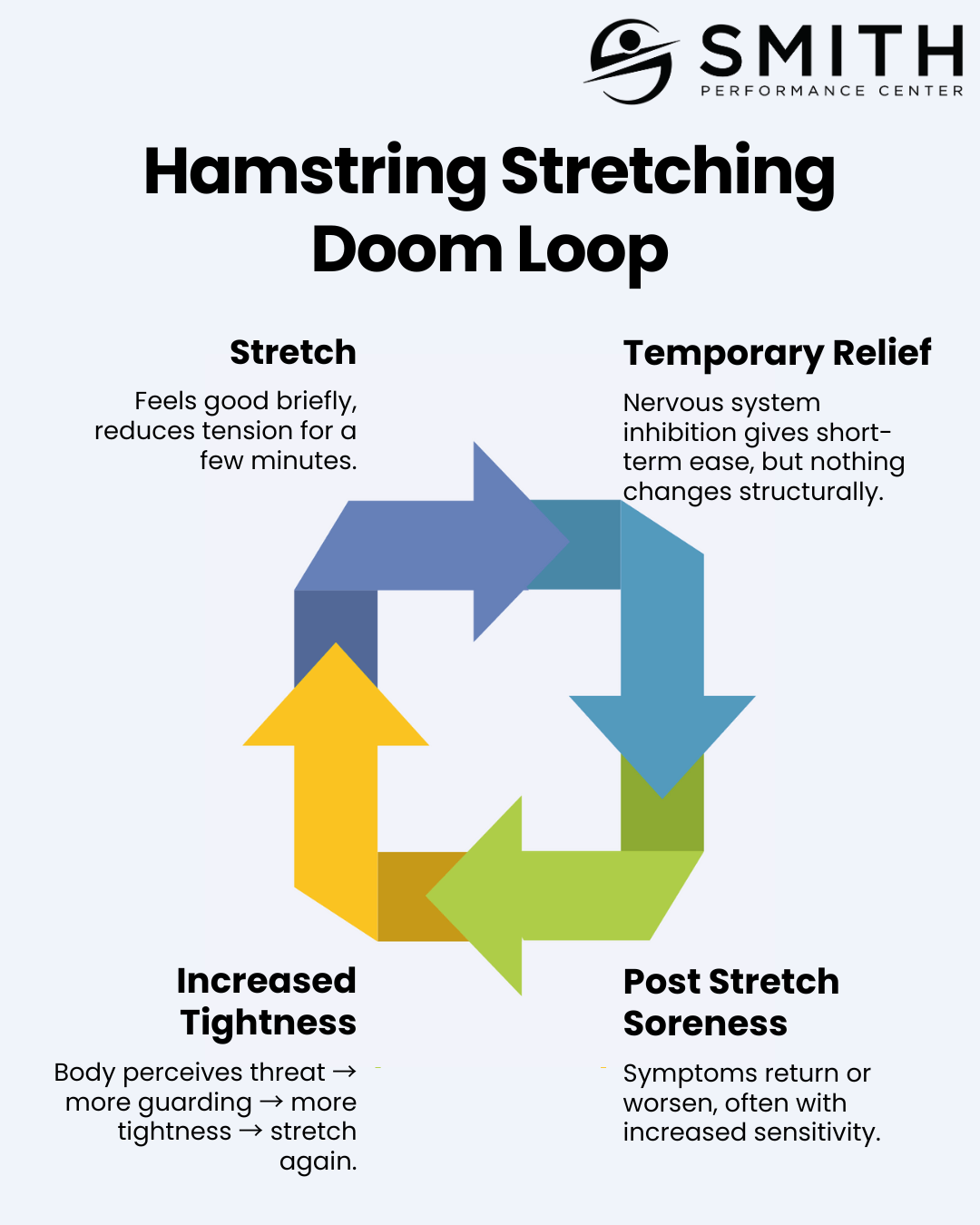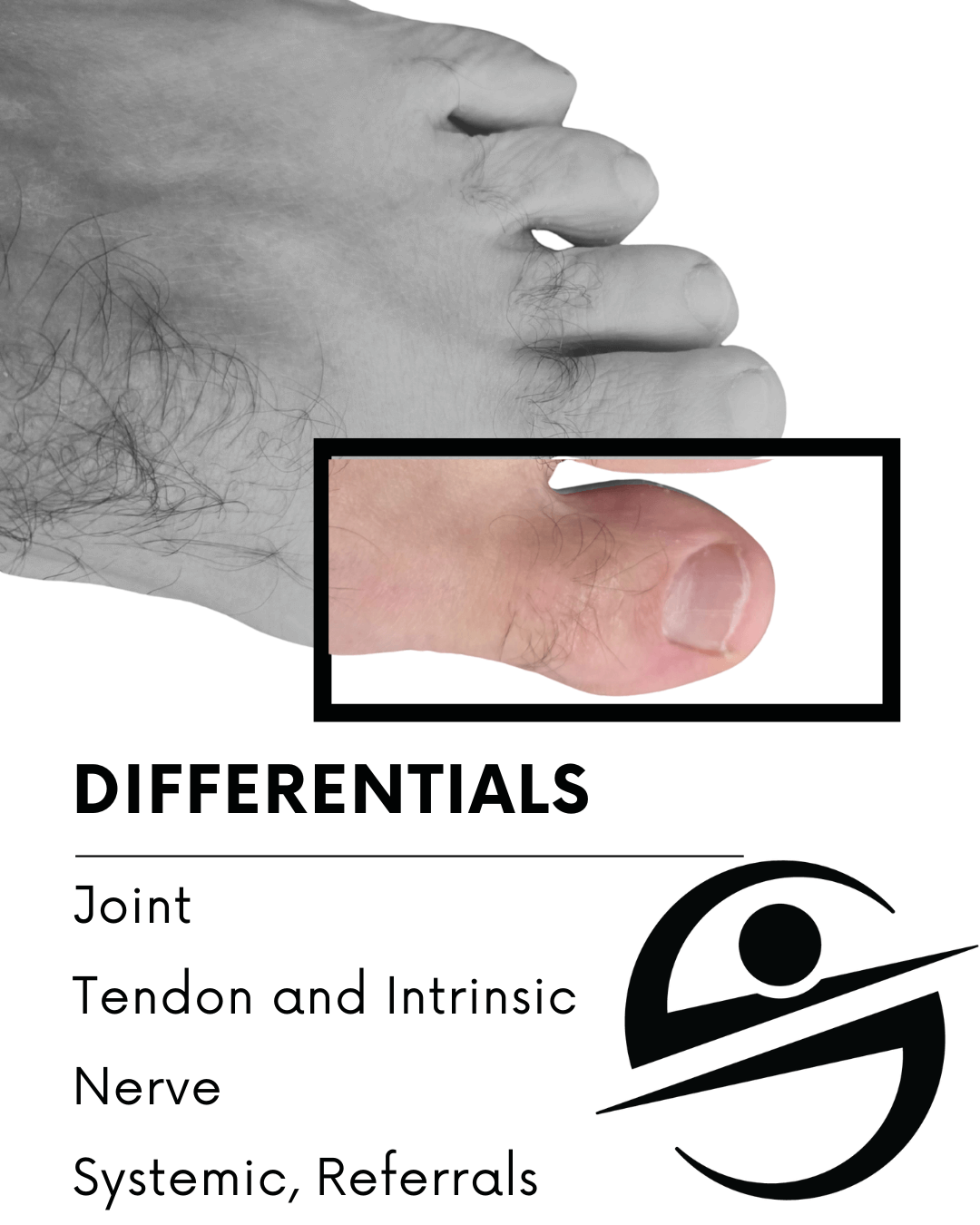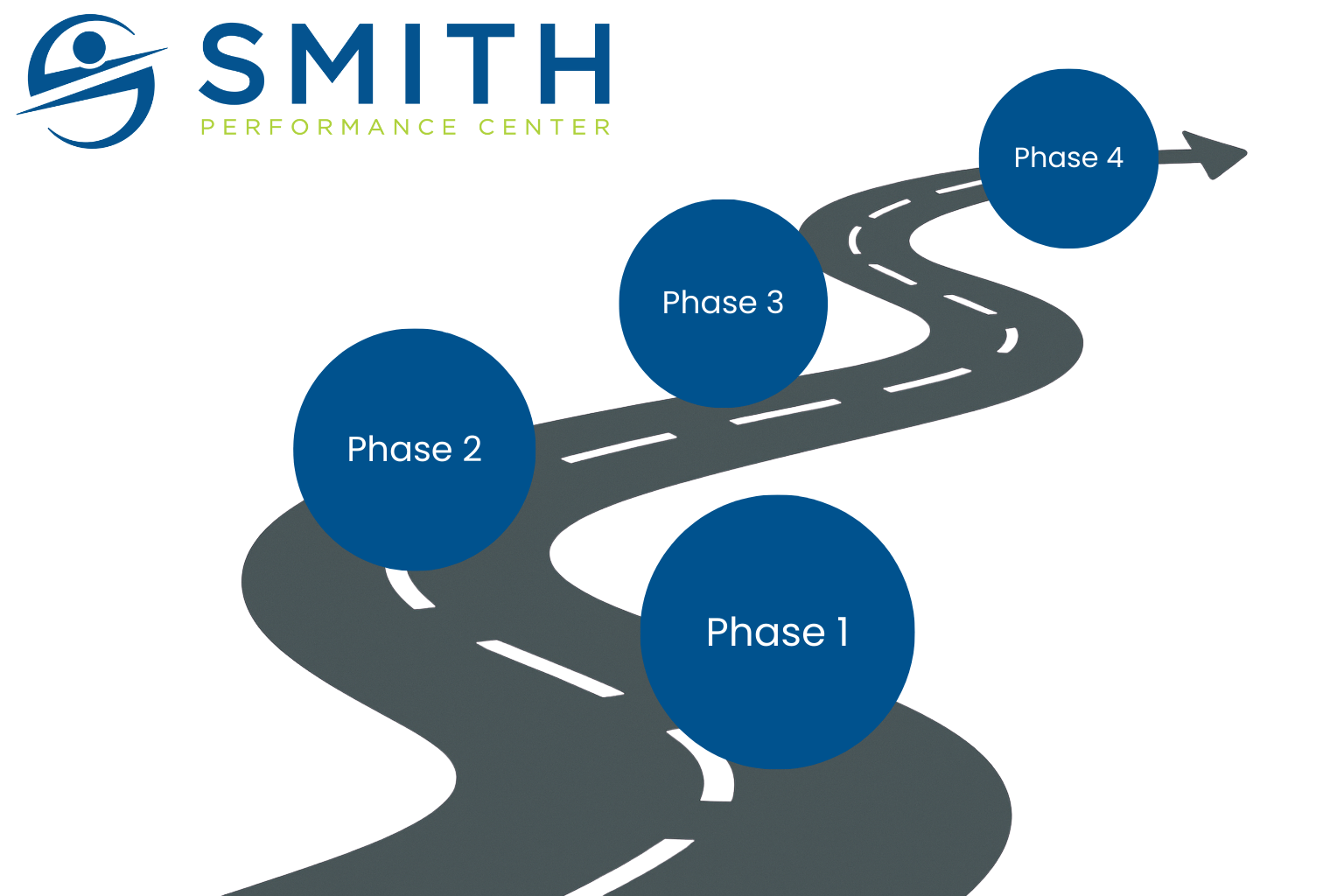Smith Performance Center Blog
Your Trusted Physical Therapy and Strength Training Blog for Injury Rehab and Pain Management
Welcome to the physical therapy blog from Smith Performance Center—your source for expert guidance on injury recovery, pain management, strength training, and sustainable health habits. Whether you’re managing chronic pain, recovering from surgery, or building long-term fitness, our team shares actionable strategies backed by clinical experience and real-world success. Stay up to date with new posts on rehab phases, movement progression, exercise programming, and the science behind making healthcare work for you.


Why Your Hamstrings Hurt After Stretching (and What’s Really Going On)
Stretching is supposed to make your hamstrings feel better—looser, lighter, more flexible. So why are you experiencing only temporary relief at best—and often feel even more sore after stretching? There’s a deep cultural belief in the power of stretching to reduce pain, improve mobility, and prevent injury. The support for those claims is, at best, inconsistent or non-existent. 1,2 If you’ve found this article, you’ve likely noticed a pattern yourself: every time you stretch your hamstrings, they get worse. At Smith Performance Center, we see this pattern constantly. The sensation of “tight” hamstrings is rarely about flexibility—even in those with limited motion. We hear people complain of tightness in tissue disorders that actually cause more motion than normal. More often, it’s a protective signal that

Why Big Toe Pain Keeps Coming Back (and Why It’s So Hard to Fix)
Case Study: The Dancer With Recurrent Big Toe Pain A former college dancer came into the clinic frustrated. She’d stopped dancing years ago, but every time she returned to even basic classes, her big-toe pain spiked. She tolerated hiking in her stiff boots, a little pain but nothing that stopped her — yet one night of dancing, and she’d hobble for a week with a throbbing big toe. Her frustration was visible, and the best advice she’d heard—stop dancing—wasn’t one she wanted to follow. Her last visit with a podiatrist ended with an injection that helped for about a week before the pain returned. She started to believe her big toe would never handle the way she moved in college. There didn’t seem to be

Osteoporosis & Lifting: How SPC Builds Bone Safely
Learn how Smith Performance Center helps people with osteoporosis and lifting programs that build stronger bones safely through progressive strength and impact training in Tucson.

What Is a Home Plan at Smith Performance Center?
At Smith Performance Center, the home plan is a central feature of your rehabilitation experience. If you’ve worked with physical therapy in the past, you’ve probably been given a list of exercises to do on your own, most often called a ther-ex list or home exercise plan. Our approach is different. The purpose of your home plan isn’t just to give you something to do between visits — it’s to improve your tissue capacity and help you progress safely toward your goals. And the strategy often changes as you move from Phase 1, where we identify and outline what is causing your pain, to Phase 2, where you learn to manage your symptoms, to Phase 3, where we work to build your tissue capacity and

Why Your Hamstrings Always Feel Tight (and Why Stretching Isn’t Solving It)
You have chronic hamstring tightness. You don’t even remember when it started. So you stretch. You foam roll. You warm up, cool down, and maybe even do yoga. Then you try massage or physical therapy. Maybe you’re told your glutes are weak and you’re handed a list of exercises to fix the problem. And yet, months—or years—later, your hamstrings still feel tight. Sometimes they even hurt. Eventually, you just decide this is probably your life. So you Google it. What Google Says About Chronic Hamstring Tightness “Tight hamstrings are a common issue, often caused by prolonged sitting, intense physical activity, or muscle imbalances. To address this, regular stretching—especially dynamic stretches before activity and static stretches afterward—can be beneficial. Strengthening in a lengthened position can also

How to Find the Real Cause of Pain: Our 4-Pillar Diagnosis Process
If you are trying to find the cause of pain that keeps returning, you are not alone. Many people are given quick labels like tendonitis or a pinched nerve and told to rest but that often does not solve the real issue. At Smith Performance Center, we go deeper than a label. We use a system called the 4 Pillars of Diagnosis to understand the real problem and build a clear path to recovery. Each pillar gives us critical information about what is causing your symptoms, how your body is functioning, what helps, and what triggers setbacks. It is the difference between a guess and a plan that works. 1. Structural Diagnosis: What Might Be Injured? This is the traditional starting point in most evaluations.

Why Your Hamstrings Hurt After Stretching (and What’s Really Going On)
Stretching is supposed to make your hamstrings feel better—looser, lighter, more flexible. So why are you experiencing only temporary relief at best—and often feel even more sore after stretching? There’s a deep cultural belief in the power of stretching to reduce pain, improve mobility, and prevent injury. The support for those claims is, at best, inconsistent or non-existent. 1,2 If you’ve found this article, you’ve likely noticed a pattern yourself: every time you stretch your hamstrings, they get worse. At Smith Performance Center, we see this pattern constantly. The sensation of “tight” hamstrings is rarely about flexibility—even in those with limited motion. We hear people complain of tightness in tissue disorders that actually cause more motion than normal. More often, it’s a protective signal that

Why Big Toe Pain Keeps Coming Back (and Why It’s So Hard to Fix)
Case Study: The Dancer With Recurrent Big Toe Pain A former college dancer came into the clinic frustrated. She’d stopped dancing years ago, but every time she returned to even basic classes, her big-toe pain spiked. She tolerated hiking in her stiff boots, a little pain but nothing that stopped her — yet one night of dancing, and she’d hobble for a week with a throbbing big toe. Her frustration was visible, and the best advice she’d heard—stop dancing—wasn’t one she wanted to follow. Her last visit with a podiatrist ended with an injection that helped for about a week before the pain returned. She started to believe her big toe would never handle the way she moved in college. There didn’t seem to be

Osteoporosis & Lifting: How SPC Builds Bone Safely
Learn how Smith Performance Center helps people with osteoporosis and lifting programs that build stronger bones safely through progressive strength and impact training in Tucson.

What Is a Home Plan at Smith Performance Center?
At Smith Performance Center, the home plan is a central feature of your rehabilitation experience. If you’ve worked with physical therapy in the past, you’ve probably been given a list of exercises to do on your own, most often called a ther-ex list or home exercise plan. Our approach is different. The purpose of your home plan isn’t just to give you something to do between visits — it’s to improve your tissue capacity and help you progress safely toward your goals. And the strategy often changes as you move from Phase 1, where we identify and outline what is causing your pain, to Phase 2, where you learn to manage your symptoms, to Phase 3, where we work to build your tissue capacity and

Why Your Hamstrings Always Feel Tight (and Why Stretching Isn’t Solving It)
You have chronic hamstring tightness. You don’t even remember when it started. So you stretch. You foam roll. You warm up, cool down, and maybe even do yoga. Then you try massage or physical therapy. Maybe you’re told your glutes are weak and you’re handed a list of exercises to fix the problem. And yet, months—or years—later, your hamstrings still feel tight. Sometimes they even hurt. Eventually, you just decide this is probably your life. So you Google it. What Google Says About Chronic Hamstring Tightness “Tight hamstrings are a common issue, often caused by prolonged sitting, intense physical activity, or muscle imbalances. To address this, regular stretching—especially dynamic stretches before activity and static stretches afterward—can be beneficial. Strengthening in a lengthened position can also

How to Find the Real Cause of Pain: Our 4-Pillar Diagnosis Process
If you are trying to find the cause of pain that keeps returning, you are not alone. Many people are given quick labels like tendonitis or a pinched nerve and told to rest but that often does not solve the real issue. At Smith Performance Center, we go deeper than a label. We use a system called the 4 Pillars of Diagnosis to understand the real problem and build a clear path to recovery. Each pillar gives us critical information about what is causing your symptoms, how your body is functioning, what helps, and what triggers setbacks. It is the difference between a guess and a plan that works. 1. Structural Diagnosis: What Might Be Injured? This is the traditional starting point in most evaluations.
